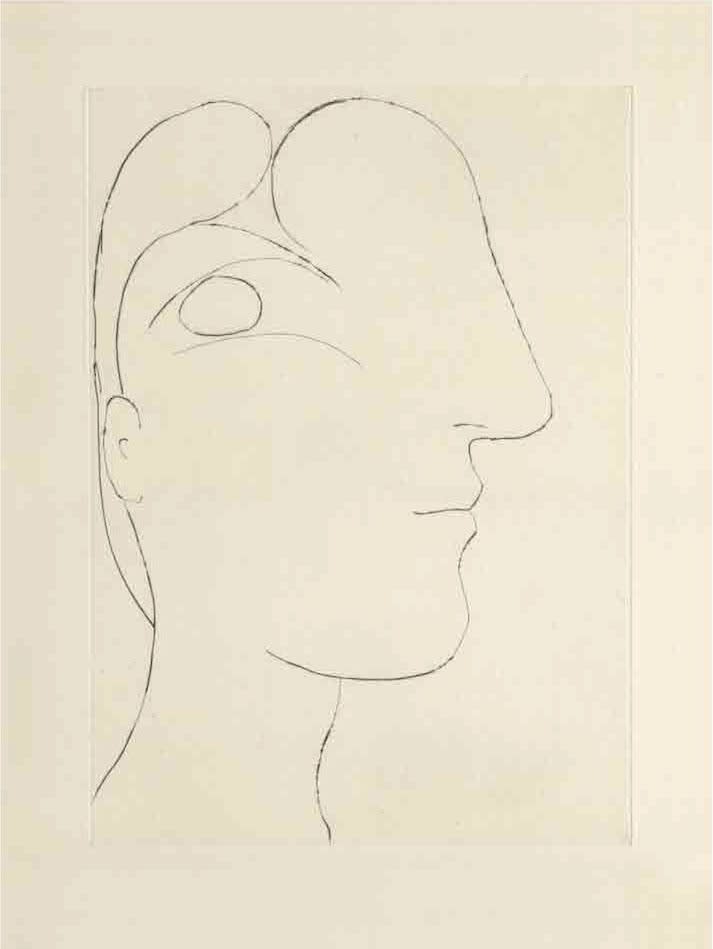PABLO PICASSO
Literature
Picasso created several busts and heads of Marie-Thérèse Walter in the early 1930s in his studio at Boisegeloup. He was experimenting with exaggeration and abstraction of the human form at this time, and often fused her nose with her forehead in a prominent protrusion that dominates the face, both in painting and sculpture of this period. Over the years, many art historians have interpreted it as a phallic form that represents Picasso’s lust for his young lover. Deborah Wye, Senior Curator at the Museum of Modern Art, has also noted that it resembles the facial features of many of the African fertility masks that were in Picasso’s collection installed at Boisgeloup.
Many of his prints from this period, including several plates from the Suite Vollard, show a sculptor in the studio, contemplating his work. Other prints re-imagine Picasso’s own sculptures in two-dimensional form, as in this example. In such works, he enjoyed playing with the three-dimensional effects that can be achieved using only line, both contour (as he did here) and layered. A related print, Sculpture (Head of Marie-Therese) (Bloch 250)—also completed in 1933—shows the latter approach of layering. In addition to intaglio plates, Picasso also created a series of monotypes the same year that closely resemble Profil sculptural de Marie-Thérèse.
Elegant line drawings like this example may have been inspired by Picasso’s friendly rivalry with Matisse, who was a master of contour line. Picasso held Matisse in high regard, and often visited his friend’s studio incorporating innovations he found there into his own work. Their competitive friendship and mutual regard was explored in depth in the 2002 exhibition Matisse/Picasso at the Museum of Modern Art.
This impression is the third (final) state, printed in an edition of 55 by Lacourière in 1942, using the same Montval paper on which the Suite Vollard was printed necessitated by paper shortages during WWII.
